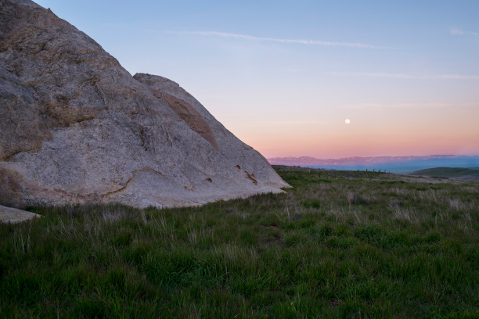Time Is Running Out for Carrizo Plain
National Monument Status Threatened for a Cherished Resource

When I moved with my husband and two children to Carrizo Plain in 1975, the land felt like a hidden jewel — still well beneath the radar. Even Central Coast residents would ask where I lived and reply, “I’ve never heard of it!” Since then, I’ve loved watching it evolve into a point of pride for everyone who lives here.
The magic of the plain and its long, uninterrupted vistas captivated my family early on, and it was obvious from the beginning that we had something special on our hands. This sentiment was echoed in Carrizo Plain’s 2001 national monument designation, a proclamation that unveiled the wonder of the landscape to Americans and the world. People from all walks of life now come from across the globe to share in this precious place, and they acknowledge and appreciate U.S. public lands as national treasures.
That’s why I was so disheartened to learn that President Trump issued an executive order putting Carrizo Plain and 26 other monuments up for review by the administration. Anyone who’s made a connection with our nation’s public lands is likely experiencing the same pain in their heart, and bewilderment that someone would aim to roll back protections for these special places. It’s an extremely selfish thing to do that will benefit a few people for a very short amount of time — a minuscule amount of time relative to the lifespan of the planet.
Trump’s review will include all monuments created since 1996 that are more than 100,000 acres or where the Interior Secretary determines the designation was made with insufficient input. It’s also an attempt to undermine the 1906 Antiquities Act, one of the nation’s most important conservation tools. Signed by President Teddy Roosevelt, the law exists to safeguard public lands and preserve cultural and historical sites for all Americans to enjoy. Sixteen presidents — eight Republicans and eight Democrats — have used it to preserve public lands from the Grand Canyon and Acadia to Joshua Tree and Muir Woods.
I learned so much about the ecological, cultural, and historical value of lands like these when I got into nonprofit conservation work. Here at home, Native Americans, farmers, ranchers, and beyond have history on this land that spans tens of thousands of years. Thousands of species live here, too — it’s one of the most biologically diverse places in the United States. This includes 35 threatened or endangered animals, like the San Joaquin kit fox and giant kangaroo rat, and multitudes of different plant species bursting from the springtime earth.
The floral extravaganza that was our recent Superbloom called worldwide attention to the land’s beauty and abundance, with thousands of rare wildflowers glimmering like jewels across hills and valleys. There are so few places left for people to see things this extraordinary — national monument status helps ensure our children and grandchildren get the chance to experience this vision.
Efforts to eliminate or shrink national monument designations will also hurt our children and grandchildren by denying them the economic benefits that come from monuments’ draw to the region. New research from Headwaters Economics shows that since Carrizo Plain’s monument designation, the regional population has grown by 25 percent, jobs have jumped 28 percent, and residents’ personal income has increased by 55 percent. In 2015 alone, travel and tourism to the region was responsible for 53,354 jobs and nearly 20 percent of total private wage. Our quality of life on the Central Coast hinges on this growth in untold ways.
I’ve known so many people over the years who worked so hard to protect places like Carrizo Plain, and this 120-day review makes a mockery of the decades of work from communities like mine. None of these monuments were designated in an offhanded way. Behind each one is a plan guiding their management, along with well-documented facts about the resources they protect. Neither the Trump administration nor Congress can shrink, eliminate or alter national monument designations without undermining these cultural and natural resources.
This threat is real, and this threat extends well beyond the Central Coast. Carrizo Plain is one monument in just one part of the United States — these national monuments are so special, and there were hundreds of thousands of people who revered them enough to get a designation. I can only imagine that every other monument being reviewed is just as precious to its visitors and neighbors as Carrizo is to me.
I urge Central Coast residents to stand up for public lands and national monuments like Carrizo Plain during the administration’s brief public comment period. Visit monumentsforall.org to submit your thoughts and feedback — the public has until July 10 to make their voices heard.
Susan Harvey is president of North County Watch in San Luis Obispo.



